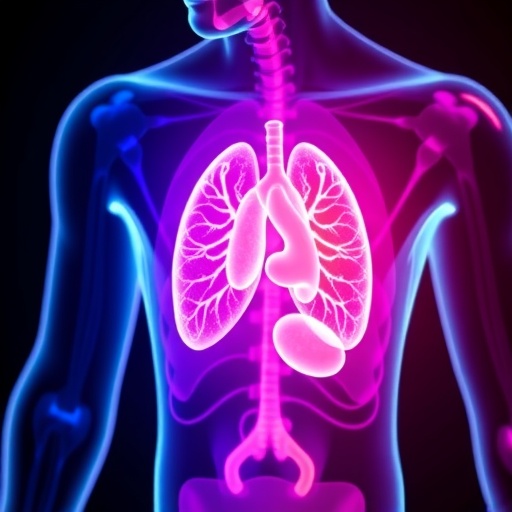In recent years, the field of organ transplantation has witnessed remarkable advancements, particularly in the methods used for assessing the viability of organs such as the liver, heart, and lungs. This dynamic area of research is crucial, as it directly influences patient outcomes and the success of transplantation procedures. The work of Croome, Taner, and Haney underscores innovative strategies that can potentially revolutionize how donor organs are evaluated, paving the way for improved transplantation practices.
Traditionally, organ viability has been assessed using static methods, which often do not capture the real-time physiological conditions of the organs before transplantation. These conventional approaches can sometimes lead to the transplantation of suboptimal organs. However, the research conducted by the authors emphasizes the importance of advanced perfusion techniques, both in-situ and ex-situ, to enhance the viability assessment process. By maintaining the organs in a near-physiological state, these methods can better mimic natural conditions, allowing researchers and surgeons to make more informed decisions regarding transplantation eligibility.
The concept of in-situ perfusion involves maintaining the blood supply to the organ while it remains in the donor’s body. This technique helps to preserve the organ with minimal ischemic injury. In contrast, ex-situ perfusion involves the extraction of the organ for preservation and assessment outside of the donor body. This method allows for more detailed evaluation and potential therapeutic interventions during the organ preservation period. Both methodologies, as articulated in the study, present their own sets of advantages and challenges, which merit discussion.
In-situ perfusion is particularly beneficial as it maintains the organ’s native blood supply and avoids the complications associated with the extraction of the organ. This minimizes cellular damage and helps maintain the metabolic activity of the organ. The study highlights the use of specialized perfusion solutions that have been designed to optimize the preservation phase of the organs. These solutions often include nutrients, anti-inflammatory agents, and temperature management strategies, which collectively work to prolong organ viability and enhance overall function.
On the other hand, ex-situ perfusion techniques open new avenues for experimentation and analysis. This method allows clinicians to manipulate the environment surrounding the organ more precisely. By regulating temperature and perfusion pressure, healthcare professionals can simulate various physiological conditions that the organ may encounter post-transplant. This level of control facilitates the identification of viable organs and improves prognostic assessments regarding their functionality.
Among the main challenges associated with these perfusion methods is the need for specialized equipment and trained personnel. Moreover, the complexities involved in optimizing perfusion parameters, such as flow rates and solution compositions, are critical to ensure that the organs are assessed accurately. The authors advocate for ongoing research to refine these techniques, aiming to enhance their safety and efficacy in clinical practice.
An intriguing aspect of this study is the emphasis on the role of technology in perfusion assessments. The integration of advanced imaging techniques and molecular biosensors can significantly augment the evaluation process. These technologies enable real-time monitoring of organ health, detecting potential issues before they become critical. By applying these insights, clinicians can better assess the viability of organs, and ultimately improve the outcomes of transplantation procedures.
Furthermore, the authors also discuss the ethical implications of the organ viability assessment. The ability to ascertain organ function more accurately can lead to better allocation of resources, maximizing the chances of successful transplantation and reducing wastage. In this context, the use of advanced perfusion techniques plays a crucial role in making ethically informed decisions in the field of transplantation.
Engaging in a comparative analysis of in-situ and ex-situ perfusion approaches reveals potential synergies between the two. Combining the immediate advantages of in-situ techniques with the detailed assessments afforded by ex-situ methods may lead to the development of hybrid protocols that optimize organ viability while also maintaining ethical considerations in organ transplantation. Such innovative approaches may reduce waiting times and enhance survival rates for recipients.
The investigation into the viability assessments of donor organs focuses not only on the physiological aspects but also incorporates the immunological perspectives. The research indicates that understanding the immunological environment surrounding the organ during perfusion can be pivotal. By taking into account the immune response, strategies can be developed to modulate host rejection and improve graft acceptance post-transplant.
Looking ahead, the contributions of this study have significant implications for future research and clinical applications. The continuous evolution of perfusion strategies is likely to pave the way for designing organ transplant protocols that are not only more efficient but also more patient-centered. By prioritizing rigorous viability assessments, healthcare providers can make informed decisions that correlate with positive long-term outcomes for patients.
Moreover, as transplantation becomes more prevalent worldwide, the insights garnered from this research will be instrumental in addressing the growing demand for viable donor organs. By understanding the nuances involved in both in-situ and ex-situ perfusion, the medical community can implement strategies aimed at optimizing organ procurement processes. Ultimately, the collective goal remains: to save lives through improved organ transplantation methodologies.
In conclusion, the exploration of advanced perfusion techniques represents a transformative shift in the domain of organ viability assessment. The strategies laid out by Croome, Taner, and Haney not only contribute to a deeper understanding of organ preservation but also hold potential for significant advancements in clinical transplantation outcomes. The research underscores the ongoing need for innovative solutions in the field, steering toward a future where organ transplantation becomes even more effective, ethical, and patient-focused.
Subject of Research: Organ viability assessment in transplantation
Article Title: Strategies for Liver, Heart, and Lung Viability Assessment While Using Donor In-Situ or Ex-Situ Advanced Perfusion
Article References: Croome, K.P., Taner, C.B. & Haney, J. Strategies for Liver, Heart, and Lung Viability Assessment While Using Donor In-Situ or Ex-Situ Advanced Perfusion. Curr Transpl Rep 11, 233–242 (2024). https://doi.org/10.1007/s40472-024-00456-2
Image Credits: AI Generated
DOI: 10.1007/s40472-024-00456-2
Keywords: Organ transplantation, viability assessment, in-situ perfusion, ex-situ perfusion, advanced techniques.




